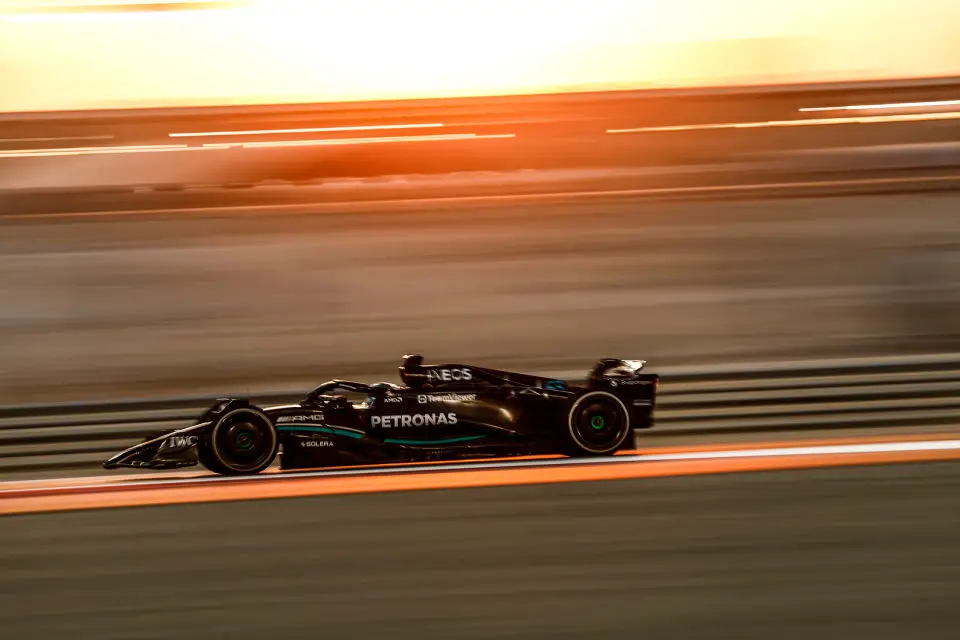Mercedes’ Mysterious Midfield Misery: Analyzing the Brazilian GP Downturn
At the Brazilian Grand Prix, the Mercedes F1 team experienced a significant performance decline, struggling to keep pace with their competitors. This unexpected downturn, starkly contrasting their previous successes, raises serious questions about the team’s future direction.
Key Takeaways:
- Mercedes, once dominant at the Brazilian GP, faced a dramatic performance slump, with Lewis Hamilton and George Russell struggling against teams like Alpine, showcasing a troubling shift to midfield performance.
- Karun Chandhok of Sky Sports F1 emphasized Mercedes’ confusion regarding their inconsistent performance, highlighting it as a major concern for the team’s future trajectory.
- Chandhok contrasted Mercedes’ unpredictable form with McLaren’s consistent improvement and performance across varied conditions, underscoring the importance of a clear and effective development path.

The recent Brazilian Grand Prix has turned out to be a pivotal moment for the Mercedes Formula 1 team. The stark contrast to last year’s victory at the same circuit underscores a worrying trend. Both Lewis Hamilton and George Russell, key figures in the team, faced unprecedented challenges, finding themselves outpaced not just by their usual rivals but also by teams like Alpine, who are typically considered midfield competitors.
Karun Chandhok, a former F1 driver and now a commentator for Sky Sports, provided a deep insight into the perplexing situation at Mercedes. He expressed concerns about the team’s inability to understand the root causes of their fluctuating performance. Chandhok noted, “I think there’s a lot of head scratching going on there. They need to understand as a collective group where the root of this problem is, because they’ve had the highs of the last couple of races where they were quick.”
One of the key issues Chandhok highlighted was Mercedes’ lack of preparation for the challenges faced at Interlagos. He pointed out that if a team anticipates struggles at a particular venue, they can strategically manage expectations and performance. However, Mercedes seemed baffled by their own inconsistency, with no clear understanding of why they experience highs and lows. Chandhok’s concern was evident as he mentioned, “That doesn’t seem to be the case. They seem to have no clear understanding of why the highs are the highs and the lows are the lows.”
The comparison with McLaren’s trajectory was particularly striking. Chandhok outlined how McLaren openly acknowledged their early-season struggles, then steadily improved following upgrades. This clear progress stands in sharp contrast to Mercedes’ confusing performance. Chandhok elaborated, “McLaren started the year being nowhere…But when they brought the upgrade in Austria, it’s moved forward. And since then, they’ve been at the front at every type of track.”
The situation at Mercedes, as Chandhok indicated, is a cause for concern, especially with the next season in mind. The team’s inability to maintain consistent performance levels and the lack of a clear development path suggest a challenging future. As Mercedes grapples with these issues, the F1 world watches keenly to see how one of its premier teams will respond to this perplexing downturn.

